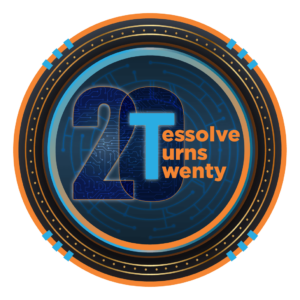In the rapidly evolving domain of technology, advancements in semiconductor designs make functional verification a dominant phase in the chip development cycle. As designs become increasingly complex and move down the nanometer scale, the problem gets compounded and needs a technological solution. Traditional manual efforts consume valuable human resources and can lead to delays in project schedules.
That’s where AI and formal techniques have revolutionized the chip industry by playing a pivotal role in modern-day chip design. These modern AI-integrated chip designs help to automate the coverage process by achieving faster coverage closure and ending up with higher overall coverage. This article intends to delve into the evolving landscape of semiconductor designs and how AI and Formal techniques boost chip verification more effectively by saving time and money more accurately.
Get in touch
The Evolving Landscape of Semiconductor Designs and Chip Verification Process
Modern semiconductors with custom chip designs require robust verification to ensure functionality, performance, and reliability. The verification process involves rigorous testing, such as identifying defects and ensuring compliance with specifications, saving time and money.
These AI-powered tools help automate the generation of test cases and error identification, effectively reducing manual efforts. This integration enhances accuracy and efficiency and empowers engineers to focus on driving the semiconductor industry forward into the new era of designs and verification excellence.
How do AI and Formal Techniques Facilitate Chip Verification?
Chips evolve billions of transistors, sophisticated functionalities, and traditional verification methods struggle to keep pace. However, modern methods of chip verification involve various things, from virtual mode creation to RTL development to static verification, property verification, AI integration, and more. Static verification identifies the structural issues, while formal verification analyzes the critical design properties. To make it more accurate and verify the processings, a testbench is developed and run until the verification goals are not achieved. Here is how chip AI and formal techniques verify the chip designs effectively.
Chip Verification by AI
The chip verification flow involves several key steps where AI can play a significant role. All steps are performed under the supervision of experts to get the best-required results.
- Virtual Model Creation: The architecture team builds a virtual model to analyze the system’s performance.
- RTL Development: An RTL model is created and followed by linting to identify coding errors and find solutions to them.
- Static Verification: This step detects structural issues and can generate numerous violations from single flaws.
- AI-Enhanced Debugging: AI helps automate violation clustering and root-cause analysis, which significantly improves debug efficiency.
- Formal Verification: This method identifies the deep bugs that simulations might miss. AI helps optimize performance by learning from previous properties processed.
- Testbench Development: Engineers create a testbench and run simulations to meet verification goals with the help of AI to streamline the process more efficiently.
AI enhances efficiency and accuracy throughout the chip verification flow or process.
Chip Verification Using Formal Techniques
Formal verification ensures a chip design that meets the specifications through mathematical proofs, and the key components include:
- Model Definition: Create a formal design representation and specify verification properties.
- Model Checking: Systematically explore all possible states of the design to verify properties.
- Equivalence Checking: Confirm that different design representations (e.g., RTL and gate-level) behave identically.
- Theorem Proving: Use formal logic to prove properties of the design, often with human guidance.
- Property Verification: Ensure specific conditions are always met during the design’s operation.
- Abstraction Techniques: Simplify the design model to focus on critical elements for verification.
- AI Integration: Enhance verification tools using AI to optimize state exploration and proof strategies.
Also Read: How Do AI-Powered EDA Tools Shape the Future of Chip Design?
Benefits of Integrating AI and Formal Techniques
The integration of AI and formal verification techniques offers several advantages that can transform the chip verification landscape:
Reduced Manual Effort
AI can significantly reduce the manual effort required by automating many aspects of the verification process. Engineers can focus on more complex tasks, such as analyzing results and refining designs, rather than spending time on repetitive verification tasks.
Increased Efficiency
Combining AI and formal techniques streamlines the verification process, allowing teams to meet tight deadlines without compromising quality. This increased efficiency can lead to faster time-to-market, giving companies a competitive edge.
Improved Accuracy
Both AI and formal techniques enhance the accuracy of verification processes. AI reduces human error in test generation and analysis, while formal methods provide a mathematical guarantee of correctness. This dual approach leads to higher confidence in the final product.
Scalability
As designs become complex, traditional verification methods may need help to keep up. The scalability of AI and formal techniques allows verification processes to adapt to increasingly complex designs without increasing manual effort.
Enhanced Collaboration
AI tools often come with user-friendly interfaces that facilitate collaboration among team members. This can help bridge gaps between hardware engineers, software developers, and verification specialists, fostering a more cohesive development environment.
Partner With Tessolve To Elevate The Chip Design And Verification Process
In the fast-paced semiconductor industry, partnering with Tessolve can significantly enhance your integrated chip design and verification processes. Tessolve is renowned for its expertise in custom chip design, providing tailored solutions for analog, digital, and mixed-signal projects.
Leveraging advanced AI and formal verification techniques, Tessolve streamlines the verification process, reducing manual effort and accelerating time-to-market.
Tessolve’s scalable solutions adapt to project complexity, allowing flexibility in responding to market demands. Our collaborative environment fosters close communication, ensuring that your strategic objectives are met.
By partnering with Tessolve, you gain access to industry-leading expertise and innovative verification methods, empowering you to navigate the challenges of semiconductor development effectively. Enhance your chip design processes and achieve superior product quality by choosing Tessolve as your trusted partner.
Let’s Sum Up
The landscape of integrated chip design is evolving rapidly, demanding innovative approaches to verification. By integrating AI and formal techniques, semiconductor companies can significantly reduce manual effort, enhance accuracy, and improve efficiency in the verification process. These advancements allow engineers to focus on more complex tasks and adapt to the growing complexity of designs. Partnering with experts like Tessolve offers tailored solutions that streamline the custom chip design and development lifecycle, ensuring high performance and reliability. Embracing these modern verification strategies accelerates time-to-market and positions companies at the forefront of semiconductor innovation



